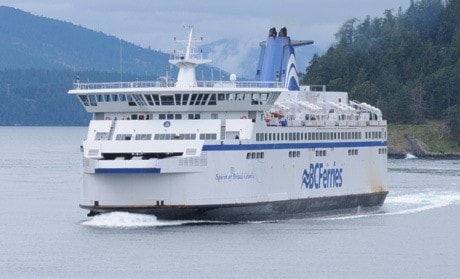When B.C. Ferries was made an independent company in 2003, the minister in charge heralded the move as a cost-saving measure.
B��Ԫ������ַ�(The province) wants B.C. Ferries to meet its potential, to sail on time, to have clean facilities, a good selection of food choices and friendly services and, of course, to remain affordable,B��Ԫ������ַ� said then-transportation minister Judith Reid.
But fares have remained anything but affordable, increasing by an average of 80 per cent in the past eight years. At the same time, the corporation is still losing money B��Ԫ������ַ� $16 million last year alone.
Facing an order from B.C. Ferry Commissioner Gord Macatee to find $30 million from service cuts, the province will be gathering public input from communities that depend on ferry service as a lifeline, navigating the stormy waters of increasingly cash-strapped residents and frustrated commuters.
ItB��Ԫ������ַ�s a crisis Macatee acknowledged in his January 2012 report on the Coastal Ferry Act. B��Ԫ������ַ�Current ferry fares and the proposed increases have reached the tipping point of affordability and are imposing significant hardship on ferry dependent communities,B��Ԫ������ַ� he said.
As the provincial government launches its formal public consultation at coastalferriesengagement.ca, The B��Ԫ������ַ is taking a comprehensive look at B.C. Ferries in a four-part series. WeB��Ԫ������ַ�ll give an overview of the challenges that lie ahead in the wake of lower ridership, higher fares and year-over-year red ink on the companyB��Ԫ������ַ�s books.
First, weB��Ԫ������ַ�ll tell you how we got here and where your money goes. Next, weB��Ԫ������ַ�ll explore the impact of increasing fares on the major routes between Vancouver Island and the mainland.
Part three will look at the southern Gulf Islands and the potential impact of a looming reduction in sailings that will save an estimated $21 million.
In our final piece, weB��Ԫ������ַ�ll look to the future of B.C. Ferries and find out what it can do to stay afloat.
dpalmer@vicnews.com



